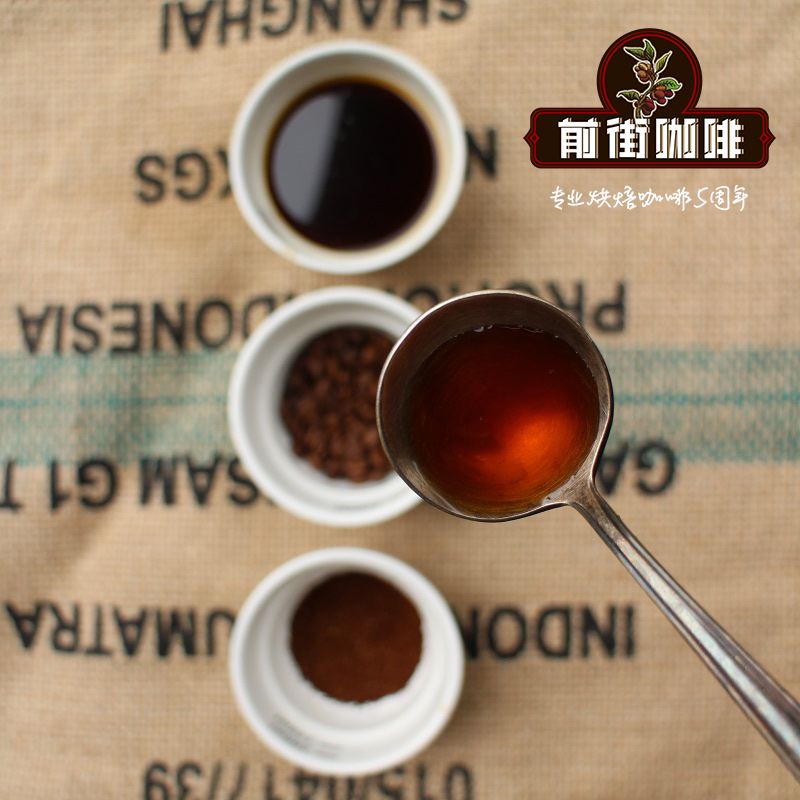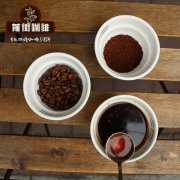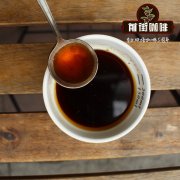Indian Coffee Brand | Calendar of Indian monsoon coffee [wind-stained Malaba Monsoon Malabar]

Professional coffee knowledge exchange more coffee bean information please follow the coffee workshop (Wechat official account cafe_style)
Indian Coffee Brand | History of Indian monsoon coffee [wind-stained Malaba Monsoon Malabar]? How to cook it properly?
The so-called monsoon Malaba, as its name implies, is actually blown out by the wind. It is said that it was a complete coincidence that there would be this strange coffee bean that is now popular in Europe. In the early 17th and 18th centuries, Indian coffee was transported to Europe by sailboat, and the journey took the first half of the year. At this time, the raw beans absorbed the salty moisture of the sea surface. By the time they arrived at the destination, the taste had changed completely, and the color changed from dark green to yellowish brown. The sour taste of the coffee almost disappeared, but it developed a strong nutty and cereal flavor. It tasted full of tea, with a bit of black rice tea flavor. Unexpectedly well received by Europeans, India now exports 3000 metric tons a year, with Norway, Switzerland, France and Italy as the largest importers.
Wind-stained coffee is a new flavor created inadvertently. In the 17th and 18th centuries, India shipped coffee beans to Europe by sailboat, which took six months. The raw beans were placed on the bottom of the barn and absorbed the moisture and salty taste of the sea. The raw beans arrived in Europe and had deteriorated. The color changed from dark green to the yellowish brown of rice. The acidity of the coffee almost disappeared, but it unexpectedly developed a strong nutty and cereal flavor. It tasted full, with a bit of black rice tea flavor. Nordic people like this kind of golden alternative coffee very much. In 1869, the opening of the Suez Canal and the advent of steamships shortened the sailing time between India and Europe, but customers began to complain that Indian coffee was "tasteless", losing the charming yellow and nutty flavor of the past, and orders plummeted. Indian exporters began to study the solution. The original coffee shipped to Europe took more than half of the time to become "transformed" and lost its original flavor, so exporters thought of the salty and wet environment blown by the Indian ocean along the coast of Malaba in southwestern India every year from late May to September. After several experiments, it was made similar to the old golden coffee without acid, so it was named "monsoon coffee", commonly known as wind-stained coffee. At present, the mode of production of wind-stained beans is to first select good raw beans and transport them to the coastal wind-stained field, spread them out and be blown by the moist southwest monsoon, and through frequent stirring by experienced staff, the beans will be evenly exposed to the wind. this process takes four to 16 months, and the coffee beans will nearly double in size, and the color will change to yellow and white, becoming a unique Indian style Malaba.
Monsoon Malaba is a very unique and famous bean produced in the Malabar region of Kerala in southern India. During the monsoon season, the beans are placed in special warehouses, which are specially ventilated, and the surrounding doors and windows are opened during the monsoon season, so that the wet monsoon can flow between the doors without hindrance, around the beans, and expose the beans to the moist air. The color is light yellow, slightly larger than normal Arabica beans, and the moisture content is between 13% and 14%. Generally speaking, the monsoon Malaba, which is blown by the monsoon, gives people the impression of strong taste, smooth taste, strong aroma and round taste.
Interestingly, the emergence of monsoon beans is an accident, formed by accident. In the age of navigation, coffee beans had to take months to sail from India to Europe. During the voyage, a high degree of moisture and sea breeze accelerated the ripening of the originally bright green beans into an old yellowish color. When they arrived in Europe, the unique ripe taste and low acidity of these yellowish beans caused a pandemic in the European market. After the shipping is developed and the shipping time is shortened, beans are deliberately exposed to the air in the producing area during the monsoon season (6murm-August), which is similar to that of shipping.
The top Malaba produced by Aspinwall's is a well-known family brand. Beans are carefully turned manually when they are processed, and after the process of monsoon blowing, defective beans are removed by manual selection before they are ready for export. The taste is quite soft, mature and rich in texture, with a unique combination of caramel finish and strong aroma. In use, it also has a wide range of uses, suitable for individual products, and excellent with beans: because of its low acidity, it is often mixed with Central American and African beans in Europe, creating a strong base and a continuous finish.
India's wind-stained Malaba is a well-known boutique bean that is formed by the cooperation of the earth and the sea breeze to produce a complex and unique flavor. Wind-stained Malaba is a unique coffee product on the west bank of Malaba, where coffee is processed and shipped around the world. In the early years, it took six months for beans to be shipped to Europe from the coast of Malaba. under the influence of the sea breeze, these beans experienced significant changes in flavor and color, which led to the birth of wind-stained Malaba boutique beans. The wind-stained coffee must be made with sun-soaked beans, and all the wind-stained factories face the salty and wet monsoon from the southwest to the west. the coffee beans are laid flat in the wind-stained field, the windows are all open, and the wind stains are reentered into the bag to a certain extent, but the coffee beans should not be filled too full. and coffee bags should not be piled too dense to avoid mildew, and coffee beans should be poured out from time to time to change sacks to avoid mold, which is quite time-consuming and labor-consuming. The weathering period is about 12 to 16 weeks, and after it is ripe, it has to be fumigated to drive out the weevil, and finally the beans are screened manually to pick out the failed beans that have not turned golden. After months of weathering, coffee has been exposed to the moist monsoon for a long time, which not only reduces the yellowing acidity of beans, but also reduces the less pleasant acidity of coffee beans, making the taste very special.
Qianjie recommended cooking:
Filter cup: Hario V60
Water temperature: 88 degrees
Degree of grinding: small Fuji degree of grinding 4
Cooking methods: the ratio of water to powder is 1:15, 15g powder, the first injection of 25g water, 25 s steaming, the second injection to 120g water cut off, waiting for the powder bed water to half and then water injection, slow water injection until 225g water, extraction time about 2:00
Analysis: using three-stage brewing to clarify the flavor of the front, middle and back of the coffee. Because the V60 has many ribs and the drainage speed is fast, it can prolong the extraction time when the water is cut off.
Important Notice :
前街咖啡 FrontStreet Coffee has moved to new addredd:
FrontStreet Coffee Address: 315,Donghua East Road,GuangZhou
Tel:020 38364473
- Prev

Is there any coffee in India? How did Indian style-stained Malaba coffee beans come from? Unique wind stain treatment method
Professional coffee knowledge exchange more coffee bean information please follow the coffee workshop (Wechat official account cafe_style) is there coffee in India? How did Indian style-stained Malaba coffee beans come from? What is the unique wind stain treatment method? Monsoon coffee is also a famous coffee in India. Coffee is placed in an open warehouse by the sea, which is hit by the monsoon, which makes the volume of coffee expand and
- Next

Tarazhu Coffee Costa Rica Tarazhu Coffee
Professional coffee knowledge exchange more coffee bean information please follow coffee workshop (Wechat official account cafe_style) Costa Rica is the most stable coffee in Central America, coffee production has a very long history, as early as the 19th century has been exported to the United Kingdom. In Costa Rica, the Robusta variety (made into canned coffee) is prohibited by law.
Related
- Detailed explanation of Jadeite planting Land in Panamanian Jadeite Manor introduction to the grading system of Jadeite competitive bidding, Red bid, Green bid and Rose Summer
- Story of Coffee planting in Brenka region of Costa Rica Stonehenge Manor anaerobic heavy honey treatment of flavor mouth
- What's on the barrel of Blue Mountain Coffee beans?
- Can American coffee also pull flowers? How to use hot American style to pull out a good-looking pattern?
- Can you make a cold extract with coffee beans? What is the right proportion for cold-extracted coffee formula?
- Indonesian PWN Gold Mandrine Coffee Origin Features Flavor How to Chong? Mandolin coffee is American.
- A brief introduction to the flavor characteristics of Brazilian yellow bourbon coffee beans
- What is the effect of different water quality on the flavor of cold-extracted coffee? What kind of water is best for brewing coffee?
- Why do you think of Rose Summer whenever you mention Panamanian coffee?
- Introduction to the characteristics of authentic blue mountain coffee bean producing areas? What is the CIB Coffee Authority in Jamaica?

